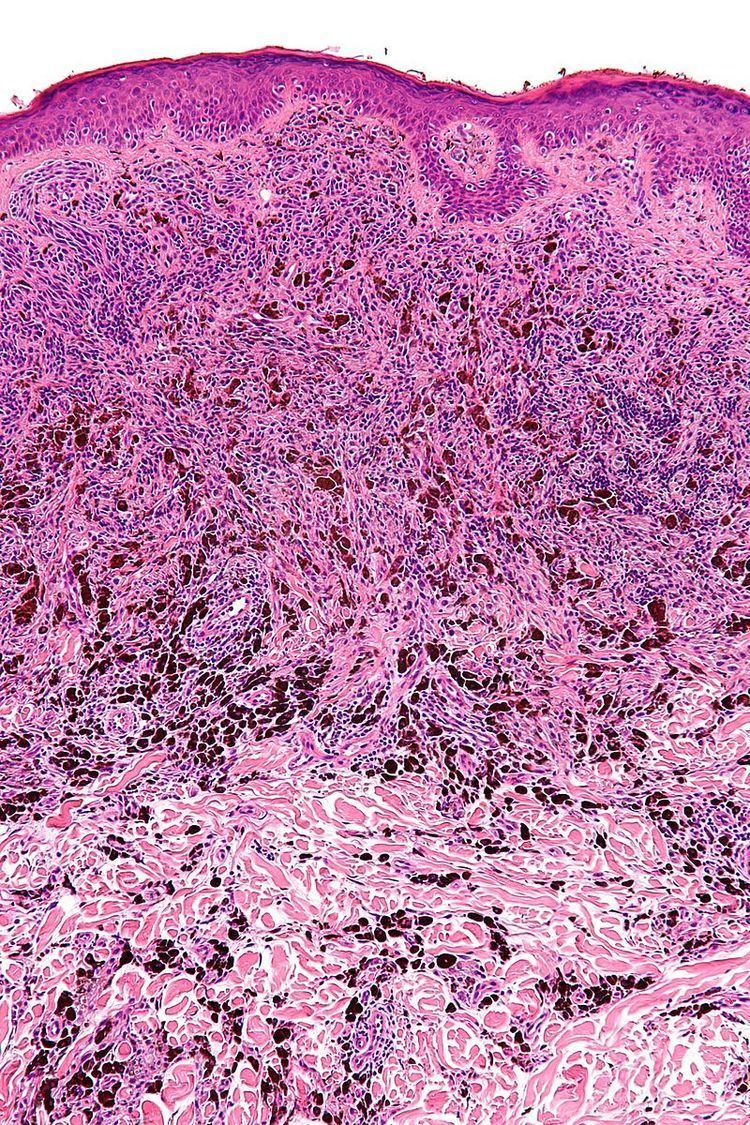Specialty oncology, dermatology DiseasesDB 31098 | ICD-10 D22 (ILDS D22.L42) MeSH D018329 | |
 | ||
Blue nevus (also known as "blue neuronevus," "dermal melanocytoma," and "nevus bleu") is a type of melanocytic nevus. The blue colour is caused by the pigment being deeper in the skin than in ordinary nevi. In principle they are harmless but they can sometimes be mimicked by malignant lesions, i.e. some melanomas can look like a blue nevus.
Classification
Blue nevi may be divided into the following types:
References
Blue nevus Wikipedia(Text) CC BY-SA
